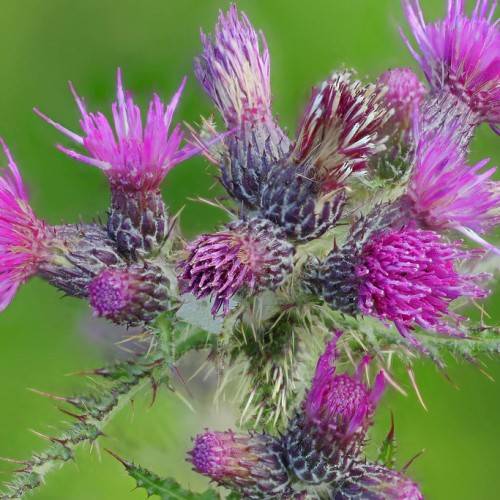
Marsh Thistle
Cirsium palustre
Watering:
Frequent
Hardiness Zone:
Sun:
full sun
Fruits:
Fruits Ready In
Leaf:
Yes
Growth Rate:
Low
Thorny:
Yes
Invasive:
Yes
Care Level:
Medium
watering
Melancholy Thistle should be watered thoroughly once every 7-10 days during the summer months. Be sure to allow the soil to dry out in between watering sessions, as this species does not tolerate soggy soils. During the winter months, reduce watering to once every 2-3 weeks as this species is semi-drought tolerant. If the weather is especially cold, overwatering is not necessary.
sunlight
Melancholy Thistle (Cirsium helenioides) typically grows best in full sunlight and will flower more if it receives 6-8 hours of direct sunlight daily. Sunlight is also important to the plant's overall health and for photosynthesis. In order to thrive, the Melancholy Thistle needs at least 4 to 5 hours of full sun exposure daily during its active growth phase, preferably in the morning. Additionally, during the middle of day, periodic shade helps protect the plant from extreme temperatures. During the spring and summer months, the Melancholy Thistle would benefit from the full sun, however, in the cooler fall and winter months it is beneficial to reduce the amount of direct sunlight to no more than 4-5 hours a day.
pruning
When it comes to pruning Melancholy Thistle (Cirsium helenioides), the best time to do so is late winter or early spring. During this period you should aim to reduce the plant size by cutting back at least half of the stalks to the ground, while leaving some of the newer growth intact. You may need to prune off dead, damaged or diseased portions of the plant as well. Make sure to use sharp and clean pruning shears to avoid damaging the stems or leaves. After pruning, you should also fertilize the plant with an all-purpose fertilizer to promote healthy growth.
